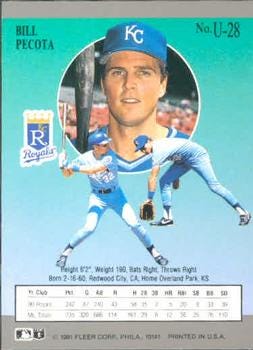Royals vs. PECOTA

Let’s start with Bill Snyder. In 1989, when he became football coach at Kansas State, nobody thought that the Wildcats could win. The team has not won a game in more than two years. But that was just the start of the issue: Kansas State had never won with any regularity. The Wildcats had been to one bowl game in their entire history. One. It was the Ind…


